This podcast episode is all about new perspectives on stuttering. This is the first of a two-part series, so be sure to tune in for part two in two weeks. Listen to part one below to learn more and don’t forget to check out the links and resources section at the bottom of the page!
These ideas aren’t new in the stuttering community, but they might feel new to some of us as SLPs. I’ll be focusing on sharing the lived experiences of people who stutter, so we can learn from their expertise and then apply it to our work with students and clients.
This episode will focus on John Hendrickson, who is a journalist and a person who stutters. Last year he released a wonderful memoir called Life on Delay: Making Peace with a Stutter. It’s full of powerful descriptions of what it actually feels like to stutter, and it also has plenty of practical advice for SLPs.
Hendricks talks about:
- The importance of making speech sessions safe spaces
- What NOT to say to students who stutter
- What TO say to students who stutter
These new perspectives on stuttering have the potential to transform our work, and to reduce the stigma around stuttering. I’m so excited to share this episode with you, especially because stuttering is a topic I’m especially passionate about. I’ve actually recorded six previous episodes about stuttering! I’ll include links for all of them in the references and resources below.
If you’re looking for fun and interactive speech therapy materials that both students and SLPs will love, check out what the Digital SLP® membership site has to offer, or sign up for our 30-day free trial. Our TPT store is also available!
References and Resources:
Full Transcript of Podcast: New Perspectives on Stuttering – Part 1
Episode 125 - New Perspectives on Stuttering - Part 1
Hi and welcome! You are listening to the Speech Space Podcast, which is a podcast full of tips and resources for busy SLPs. I'm your host, Jessica Cassity, and this is Episode 125.
This is going to be the first of a two-part series, so be sure to tune in for part two in two weeks. The title of today's episode is "New Perspectives on Stuttering," but I will be the first to admit that many of these perspectives aren't really new. People who stutter and some of their allies have been talking about these ideas for quite a while now. However, it's only more recently that they've started to take hold in the SLP world, so they might feel newer for some of us. Before we jump into today's topic, I wanted to mention that this podcast is brought to you by The Digital SLP membership site, which features time-saving interactive digital resources that are all teletherapy platform-friendly. You can learn more or sign up for a free 30-day trial by heading on over to thedigitalslp.com/digitalslp. Alright, let's go ahead and get started.
This is not the first time that I've talked about stuttering on the podcast. In fact, I went through the archives and counted, and I've actually recorded six episodes about stuttering! And I'll make sure that I link to all of those in the show notes, in case you are interested in listening. You can probably tell that I'm pretty passionate about this topic though. And along those lines, my favorite previous episode about stuttering was whenever I interviewed Ryan Gielan about his documentary, My Beautiful Stutter. If you have not listened to that episode yet, I highly recommend checking it out, especially because it has a strong connection to today's episode.
When it comes to working with stuttering as SLPs, we are all probably familiar with two major categories of interventions. One of these categories is fluency-shaping strategies, such as reduced rate of speech and the goal with these strategies generally for the student or client to have more fluent speech. Then there are stuttering modification strategies like cancellations. The goal with these strategies is generally for the student or client to stutter more easily. Some clinicians and researchers say that the difference between these two categories is whether the client is working on "fluency or freedom." But of course, even talking about two categories like this kind of sets us up for a false binary. It's just not that simple and there's a lot of nuance related to the student's age and many other factors.
So in today's episode, I wanted to explore stuttering therapy in a different way by focusing on the lived experiences of people who stutter, and then talking about some of the practical tips that we could implement based on what we learn from their expertise. And expertise is absolutely the right word here! I learned so much as I prepared for this podcast. It could easily be five episodes! But I'm going to try to stick to a manageable amount of information, but I definitely think I'll need to record a follow-up at some point.
Also, speaking of words, one of the things that I learned from my research is that some individuals do prefer the term "stutterer" instead of "person who stutters." "Person who stutters" is the person-first type of language that many clinicians are trained with, and "stutterer" is an identify-first term that is used by many people in the stuttering community. The comedian Nina G even called her memoir Stutterer Interrupted! This is very similar to the shift that was initiated by the autism community where "autistic" has become a preferred term instead of "person with autism." Of course, we always want to defer to an individual's preference if we know what they are. In this episode, I will be using "person who stutters" and "stutterer" interchangeably.
For today's episode, I'm going to focus on the memoir Life on Delay, which was written by John Hendrickson, who is a stutterer. He's also a staff writer at The Atlantic, and he's well-known for an article that he wrote in 2019 about Joe Biden's stutter. In the article, Hendrickson discloses his own stutter, and he does a great job of weaving in his own experiences with Biden's reflections about stuttering. The article went viral and the day after it came out, Hendrickson was interviewed on MSNBC. Appearing on TV wasn't something that he had ever planned to do, and he was anxious about the interview, but he got through it.
The amazing part was that after the article and the interview, stutters from all over the world started reaching out to Hendrickson, and he became more involved in the stuttering community, and ultimately he published a memoir which came out last year. I think every SLP should consider reading this book. I know that we're all so busy, but it's short! It also has some heavy subject matter and most of it probably wouldn't be appropriate to share with young students or clients. So that's just something to keep in mind. But it's so well-written and thoughtful and informative. What I appreciate about it most as an SLP is how it goes into depth about what it feels like to stutter.
I was especially struck by a quote where Hendrickson writes about the experience of blocking. He says, "You push at the first letter with everything you have, but seconds tick by and you can't produce a sound. Some blocks can go on for a minute or more. A bad block can make you feel like you're going to pass out. Blocking is like trying to push two positively charged magnets together: You get really close, really close, and you think they're finally about to touch, but they never do. An immense pressure builds inside your chest. You gasp for air and start again. Remember: this is just one word. You may block on the next word too."
It's such a powerful description. And actually, that little snippet could be great to share with students. They could write about their own experiences of stuttering and compare and contrast them with Hendrickson's. Especially when Hendrickson was young, he had a lot of secondary behaviors. He would tap his foot or move his neck in a certain way. He explains that he felt like he had to use those movements because they seem to help him get words out, but that they were also incredibly exhausting. He describes coming home from school and having painful tension and tiredness all through his body.
As I was reading Hendrickson's words, I felt like I was right there with him, and it got me thinking. So often in our stuttering therapy, we focus on what we can observe because we're worried about writing goals and getting data, and doing all the things that we need to do. But sometimes that means that we forget about the experience of the person who's stuttering, even though that's what really matters. And I'm going to talk about that in part two of this episode, so stay tuned for that. But ultimately, all of those visceral descriptions were painful to read, but they gave me a lot of insight into the lived experience of stuttering. I'm really grateful for Hendrickson's work and willingness to share them with us.
One other thing that I love about this book is its format. It's told in a series of mostly chronological vignettes, and Hendrickson actually goes back and interviews important people from his life to help him remember what happened, especially when he was younger. Even though the format has all these bite-sized moments in time, there are some clear themes that keep coming up, and they help me identify key takeaways and practical tips for SLPs.
The first takeaway is the importance of making speech therapy the safest, most comfortable place possible for our students who stutter. Hendrickson is really candid about how hard his home life was at times, mostly because he was bullied by his older brother. He was also bullied at school. And even though he describes SLPs as being kind, he found it humiliating to go to "the little room" at school, and during his sessions he felt intense pressure to perform. You can probably guess where I'm going with this. Hendrickson didn't have any place or time in his life where he could let his guard down and be completely at ease. He was never able to relax and stutter freely and feel completely safe and accepted no matter how he communicated. It's heartbreaking to realize that many of our students and clients may have similar experiences. Maybe they're bullied by siblings, maybe their parents get upset when they stutter, maybe other kids at school make fun of them. As SLPs, we have an incredible opportunity to provide the one place where they feel truly at home and never judged.
Part of helping our students feel safe and accepted is being thoughtful and intentional about what language we use with them. Along these lines, Hendrickson gives some clear ideas about what NOT to say and what TO say to our students. I will be honest that these were not easy to read, and they might not be easy to hear. And I think it's only human if we react with some defensiveness. But what helps me process through that was to really focus on how much I care about my students' wellbeing. Early in the memoir, Hendrickson writes, "'Take your time' is a polite and loaded alternative to what you really mean, which is, 'Please stop stuttering.' Yet a distressing amount of speech therapy boils down to those three words. Throughout the book, Hendrickson talks about how awful it feels to be told to slow down or take his time. And he definitely isn't the only person who feels this way! I read a lot of blog entries and interviews and watched a lot of YouTube videos to prepare for this episode, and almost every single one had some version of "please don't tell us to slow down."
As SLPs, we mean well when we say things like "take your time," but people who stutter are clear - these words have the opposite effect. They cause more tension and anxiety. In the memoir, Hendrickson also asks SLPs to stop saying "use your techniques." And he writes, "When a person of authority tells a young stutterer to "use your techniques," they are confirming the stutter's worst fear. No one is listening to what you say, only how you say it. Enough of this makes you not want to talk at all. Now again, this is hard to hear, but it's so helpful and so important. None of us want our students to stop speaking!
Of course, our students are working on specific goals and sometimes those goals involve using certain techniques, so this can get a little bit tricky. In the short term, it's important for us to find ways to show our students how much we care about what they are saying, whether they use their techniques or not. In the long term, we can shift the type of goals that we write for our students who stutter and work with them collaboratively to develop goals that are about improving their experience at school. I'll talk about this idea more in part two of this episode.
Hendrickson is also clear about something that we SHOULD say as SLPs, and it's actually just a single word: the word "stutter!" When we don't talk about stuttering in a neutral matter-of-fact way with students and families, we can unintentionally make it seem like a shameful secret. Talking about it openly can go a long way toward reducing stigma. The one possible exception might be with very young children. Courtney Byrd, a researcher at the University of Texas, is a big advocate of using terminology like "stutter," even with preschoolers. She tells a great story about a 4-year-old who was able to basically school her dentist about stuttering when he made fun of her inability to say her own name fluently. The 4-year-old said something like "Oh, I guess you didn't know that stuttering is a neurodevelopmental disorder. I can help you learn. I love that! I love that she was able to advocate for herself. Honestly, there is so much more that I could say about Hendrickson and his book, and if you read it, please let me know what you think. But for now, I'm going to pause the discussion here and we will continue again with part two of this episode in two weeks.
In the next episode, I will be sharing ideas from another amazing stutterer and unpacking some of the core elements of stutter-affirming therapy. If you enjoy today's podcast, I would be so grateful if you would take a moment to leave a review on iTunes. It does make it easier for fellow SLPs to find the show. We put out new episodes twice a month on the first and third Tuesdays. Also, please don't forget to check out thedigitalslp.com/digitalslp if you're interested in giving The Digital SLP a try or checking out other resources on the website. Thanks so much for tuning in!


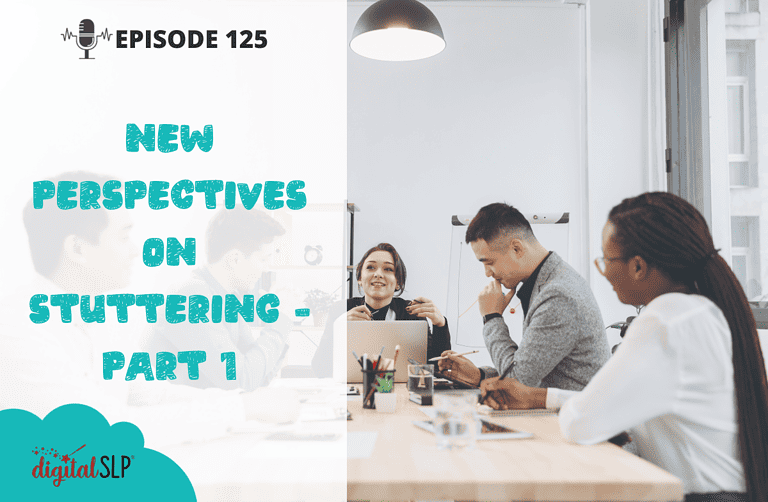



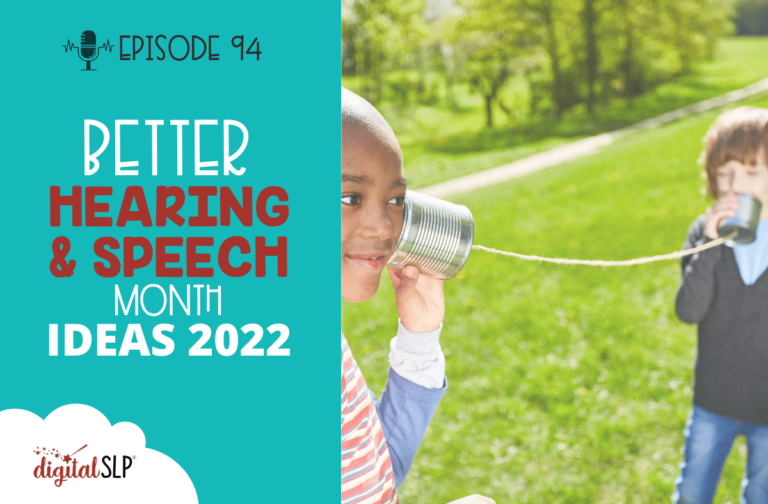
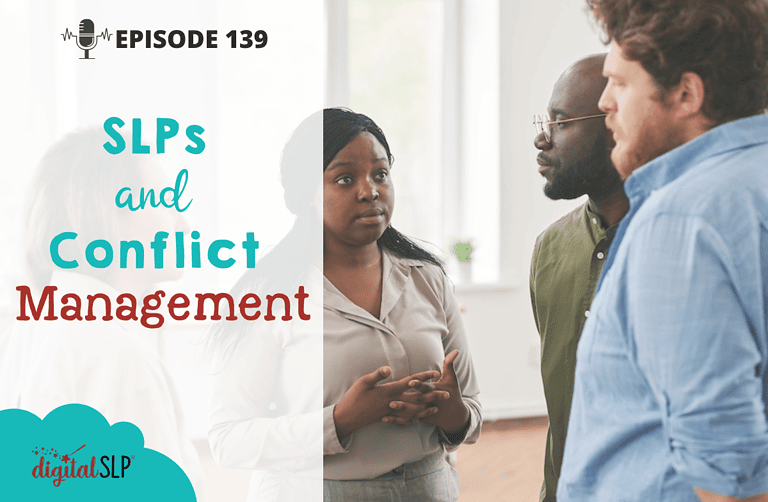
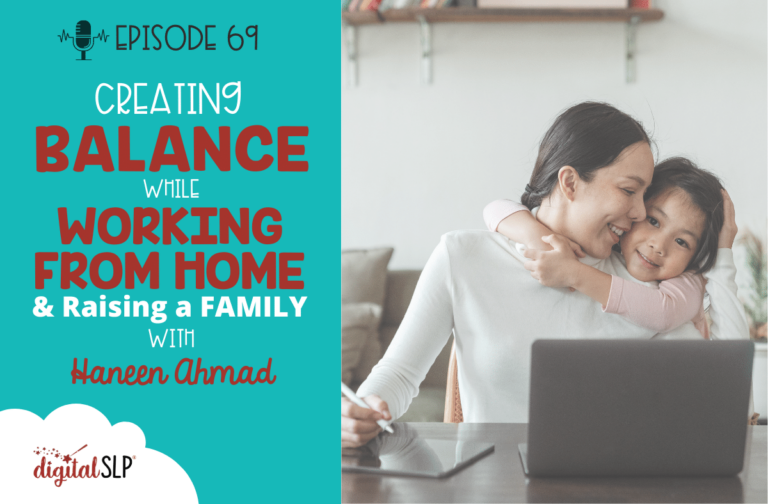
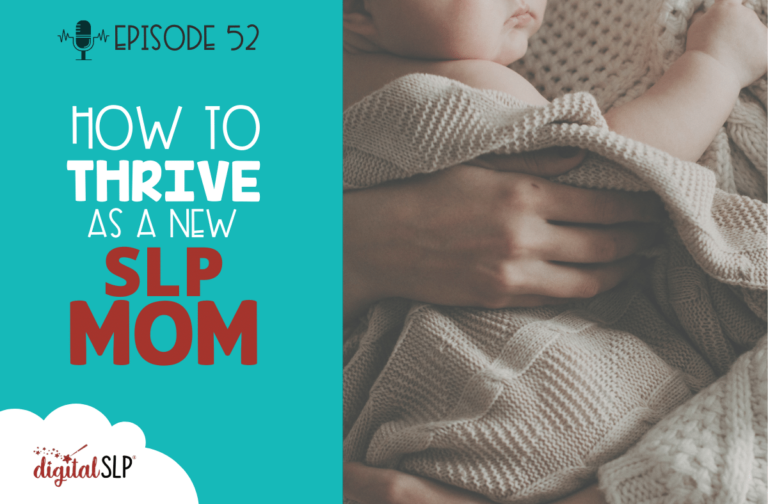
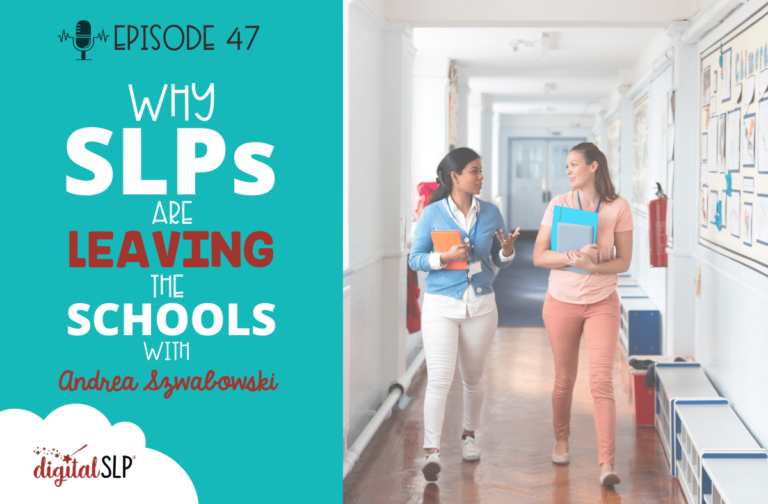


Recent Comments